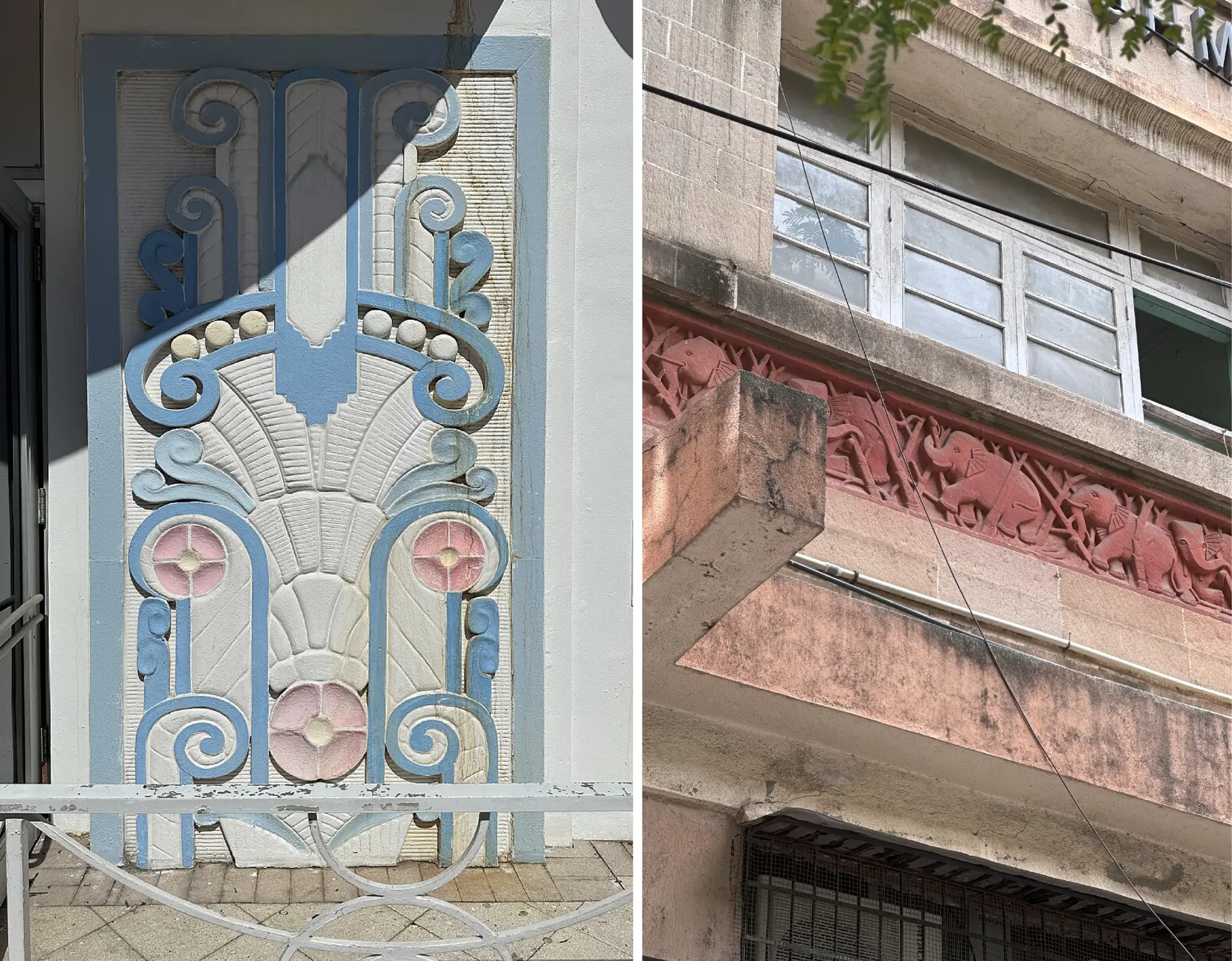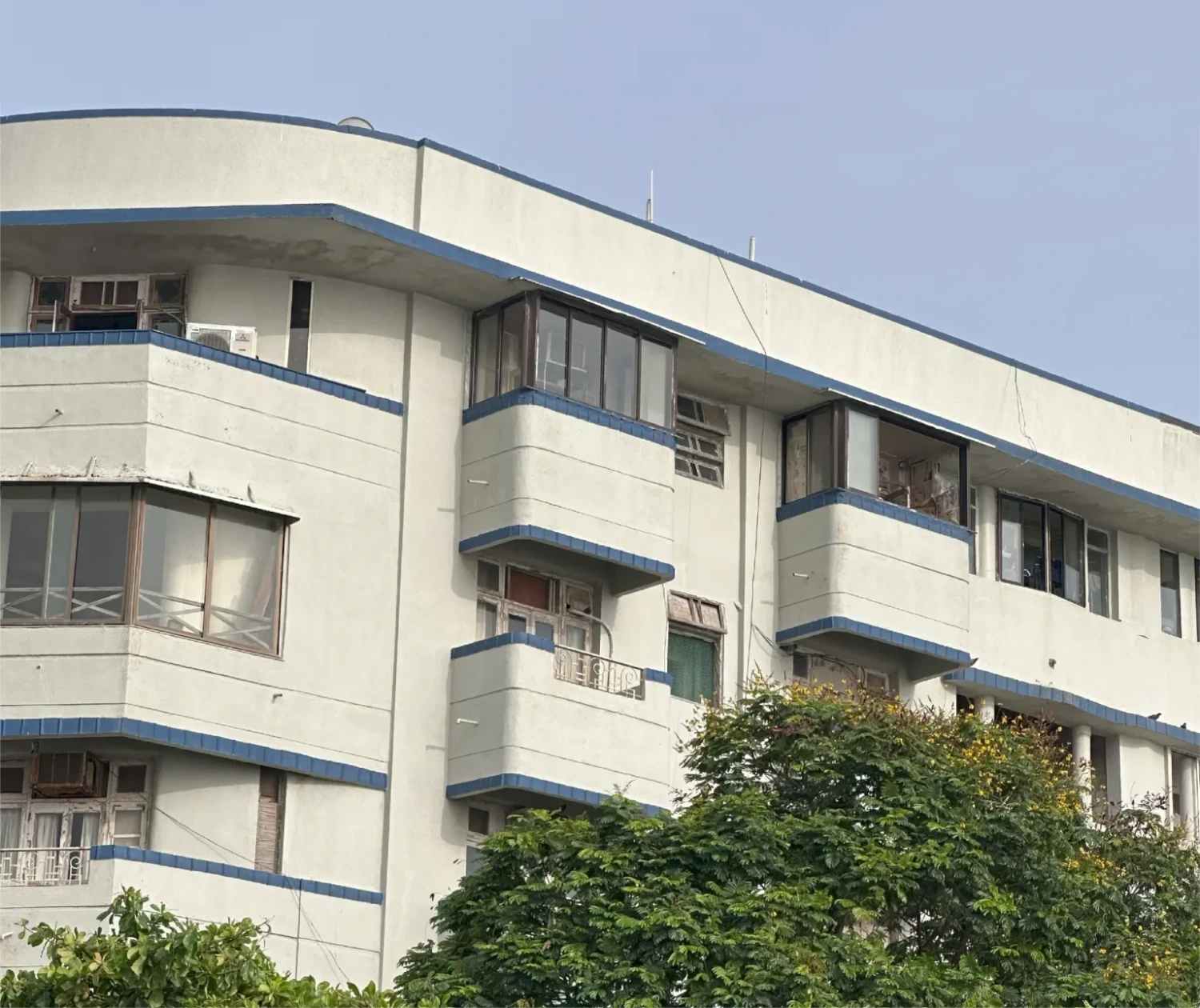Style Spotting!
6 Quick Ways to Identify a Deco Building
Art Deco architecture is not limited to Mumbai and Miami. The design and architecture style spread across multiple metros and urban centres across the world, including Tehran and Mexico.
So, the next time you walk past an Art Deco structure or architectural detail, you know its original Deco, here’s a quick guide to 10 timeless clues.
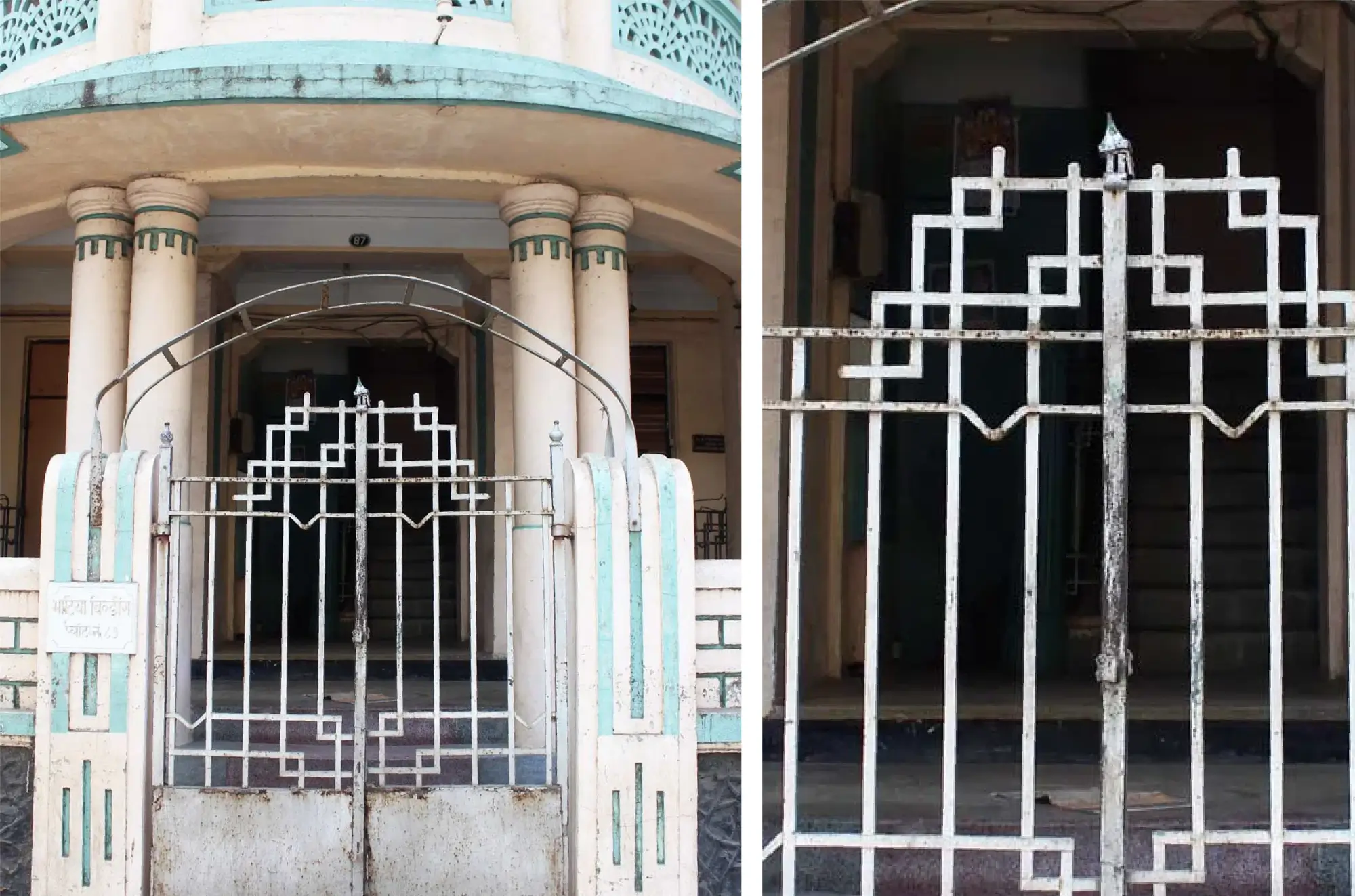
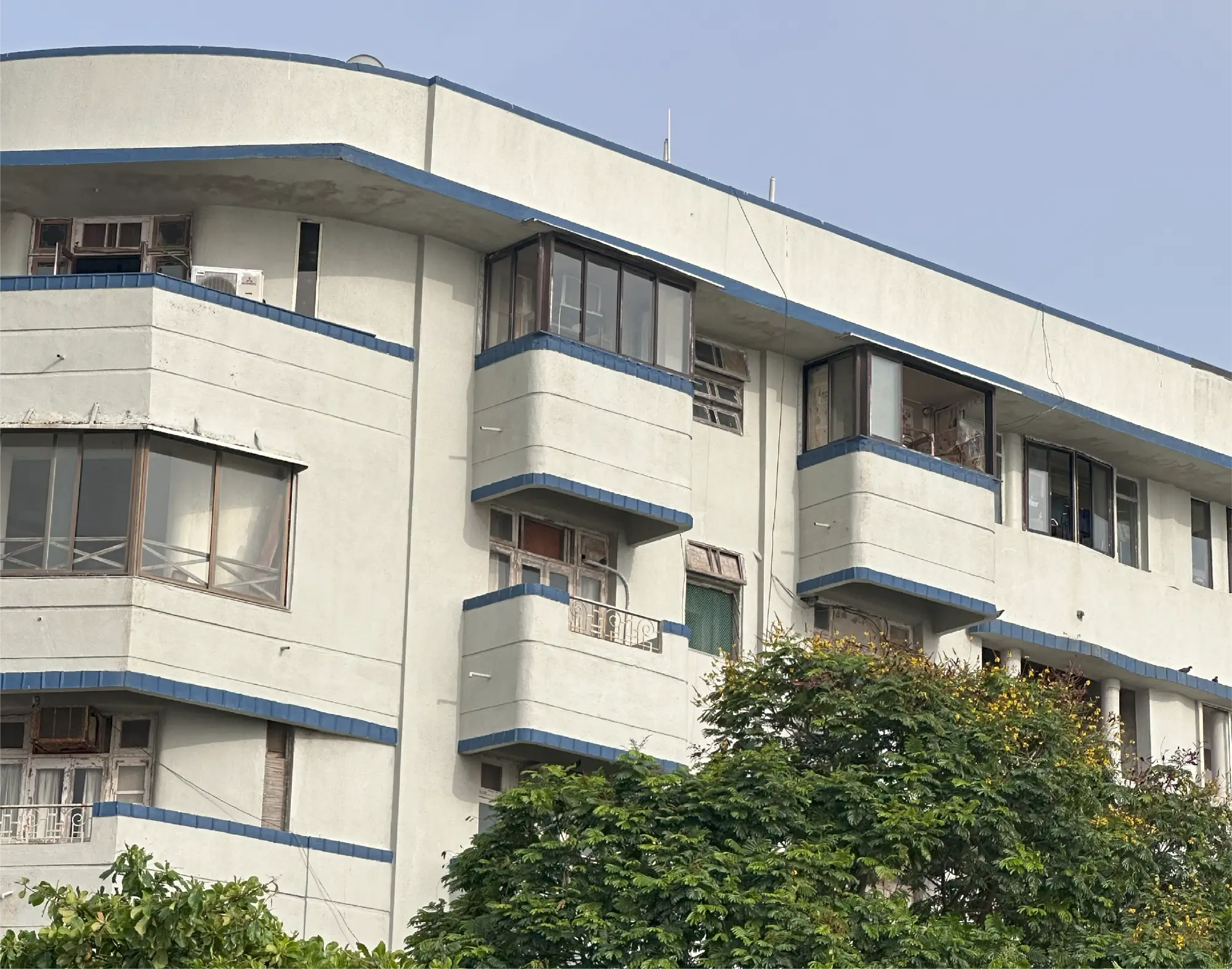
1. FLAT ROOFTOPS THAT FEEL LIKE TERRACES:
Look up. Unlike the pitched roofs of the 19th century, Deco buildings almost always have flat reinforced concrete slabs; that are clean and perfect for spacious terraces. This liberated architects from classic profiles, enabling freer forms and open spaces.
Find it here: Along Mumbai’s Marine Drive or what’s called Queen’s Necklace, the building rooftops often double up as breezy retreats for their residents.
Framroz Court’s flat rooftop doubles as a breezy terrace, embodying Art Deco’s preference for clean slabs and open-air living along Marine Drive.
2. THE CENTRAL TOWER AND NAUTICAL WATCH:
Many Deco façades are anchored by a central tower, rising like a ship’s bridge, flanked by symmetrical wings. Port cities frequently adopted design inspirations from ocean liners, with porthole windows, deck-like balconies, and observation towers that looked like a vessel poised at the dock. Often, there’s even a watchtower perched atop – an ode to maritime life.
Soona Mahal on Mumbai’s Marine Drive features a central tower with porthole windows and deck-like balconies, crowned by a watchtower.
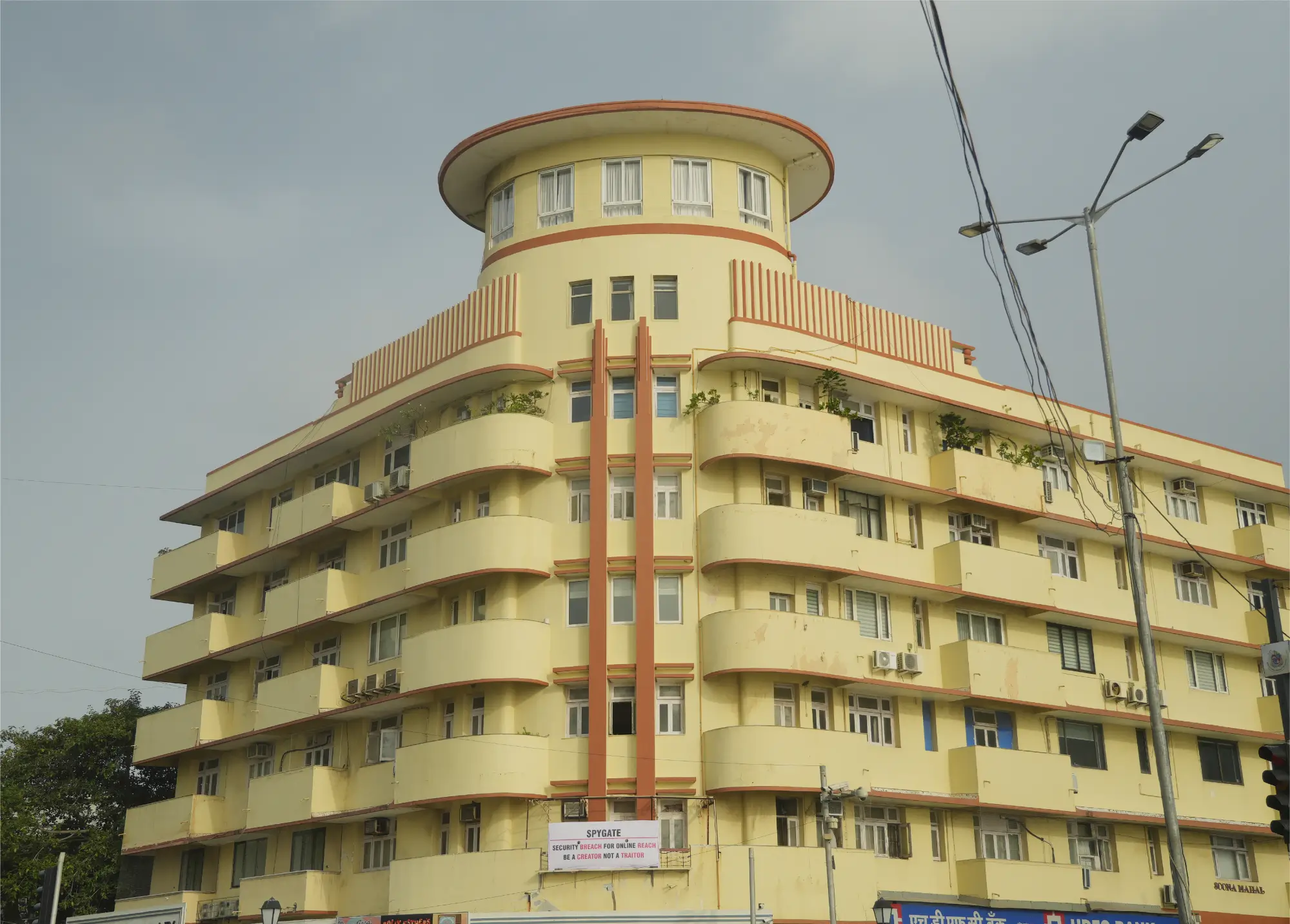
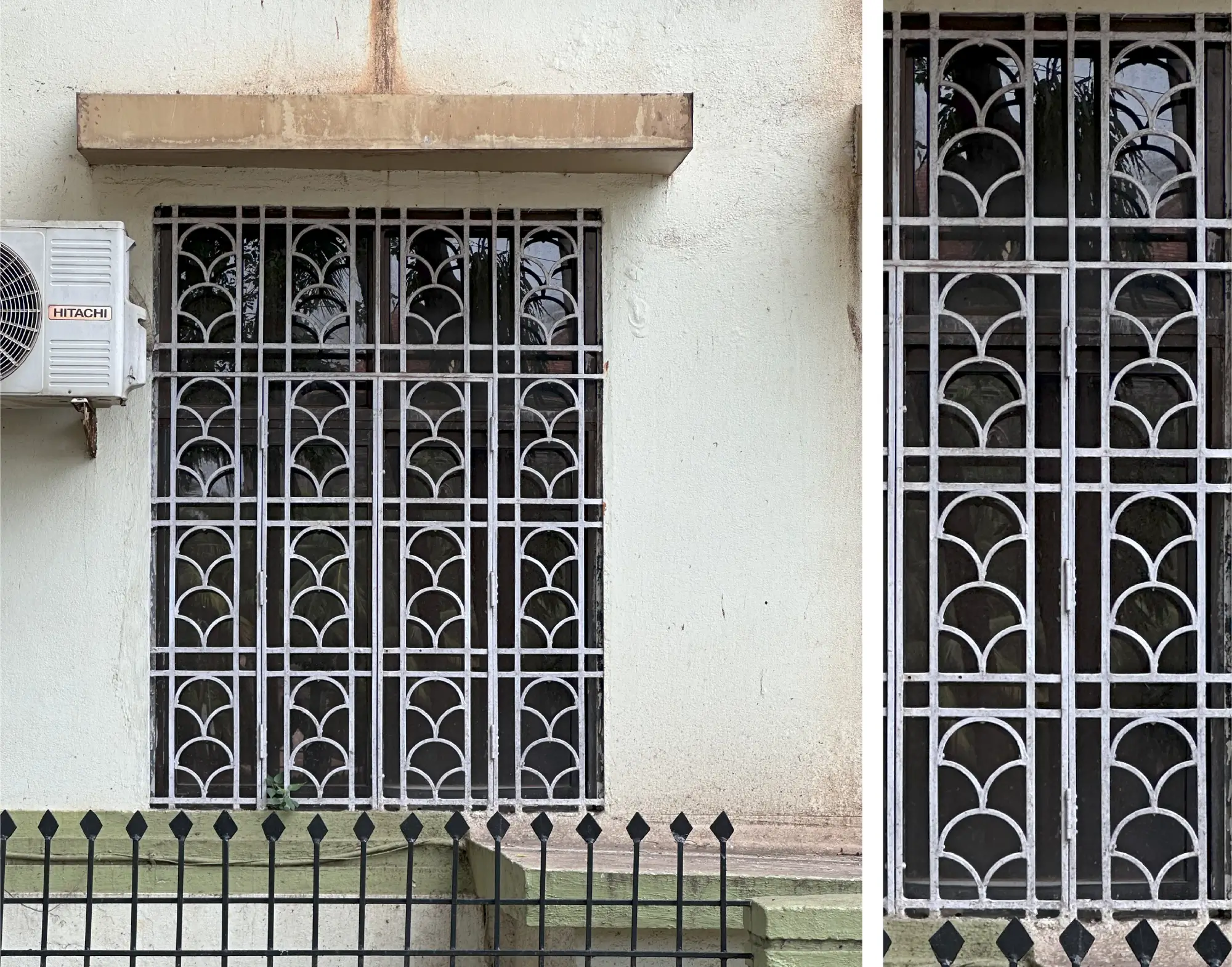
3. REPETITIVE GRILLES:
Design by the Dozen: Step closer to the structures, and you’ll find geometric grills lining windows and staircases. Art Deco loves a good pattern. Instead of ornate handmade reliefs, Deco architects favored geometric, mass-produced and rhythmic motifs — chevrons, zigzags and sunbursts. These reflect the era’s embrace of industrial aesthetics and mechanical precision.
Queen’s Court at Mumbai’s Oval Maidan features rhythmic geometric grilles on windows and staircases.
4. STREAMLINED, HUMBLE ENTRYWAYS:
While the overall design might appear luxurious, many Art Deco buildings, particularly residential ones, were built with economy in mind. Therefore, Deco porches are minimalist, efficient, often covered and simplistic in detail.
Find it here: This understated elegance is a hallmark of Mumbai’s Shivaji Park buildings.
While Miami’s Shelborne South Beach features a sleek canopy and streamlined entry.
The Shelborne South Beach, a 1940s Art Deco icon, boasts a sleek curved entrance and geometric detailing that epitomize Miami’s mid-century modern elegance. Source: Shelborne South Beach
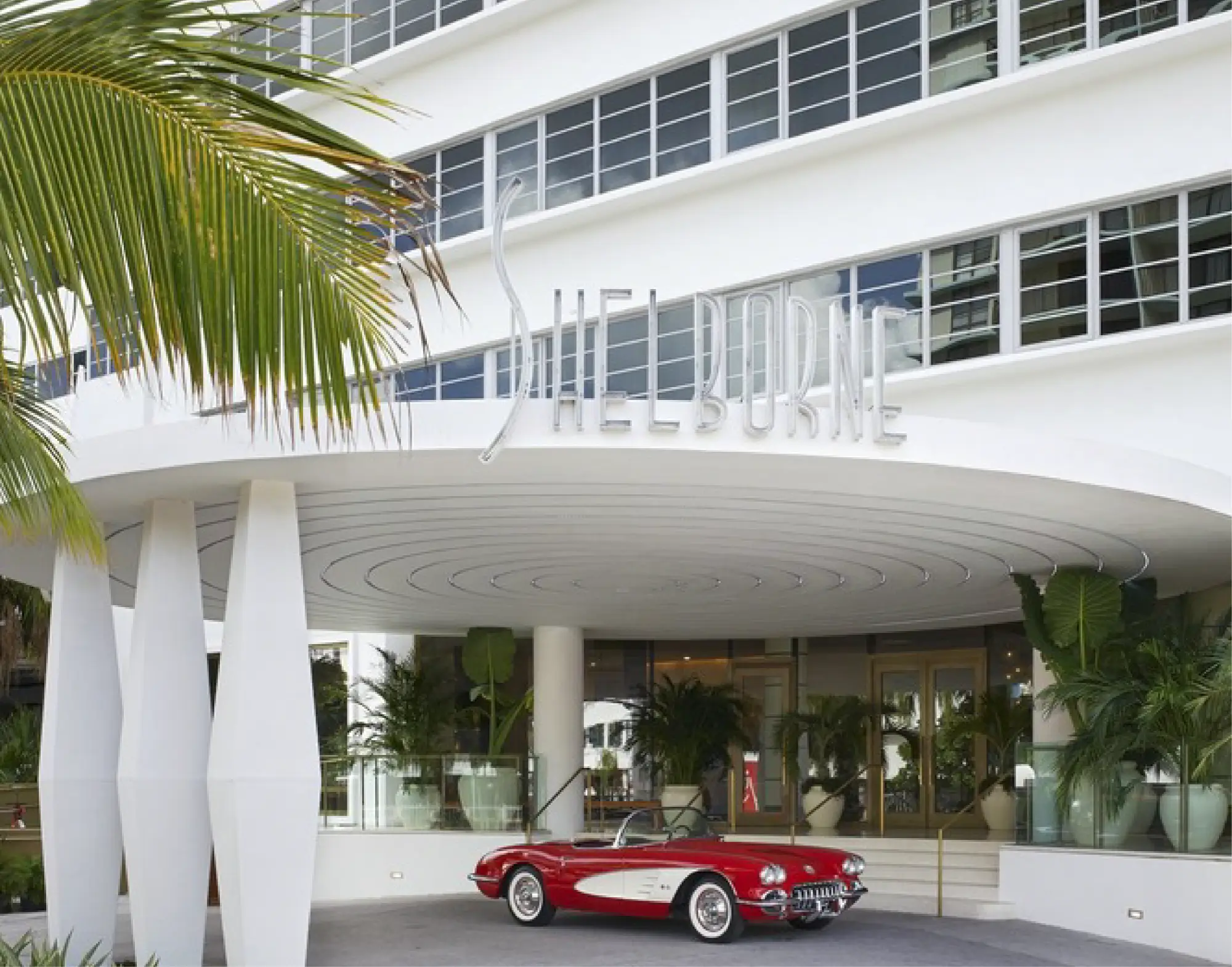
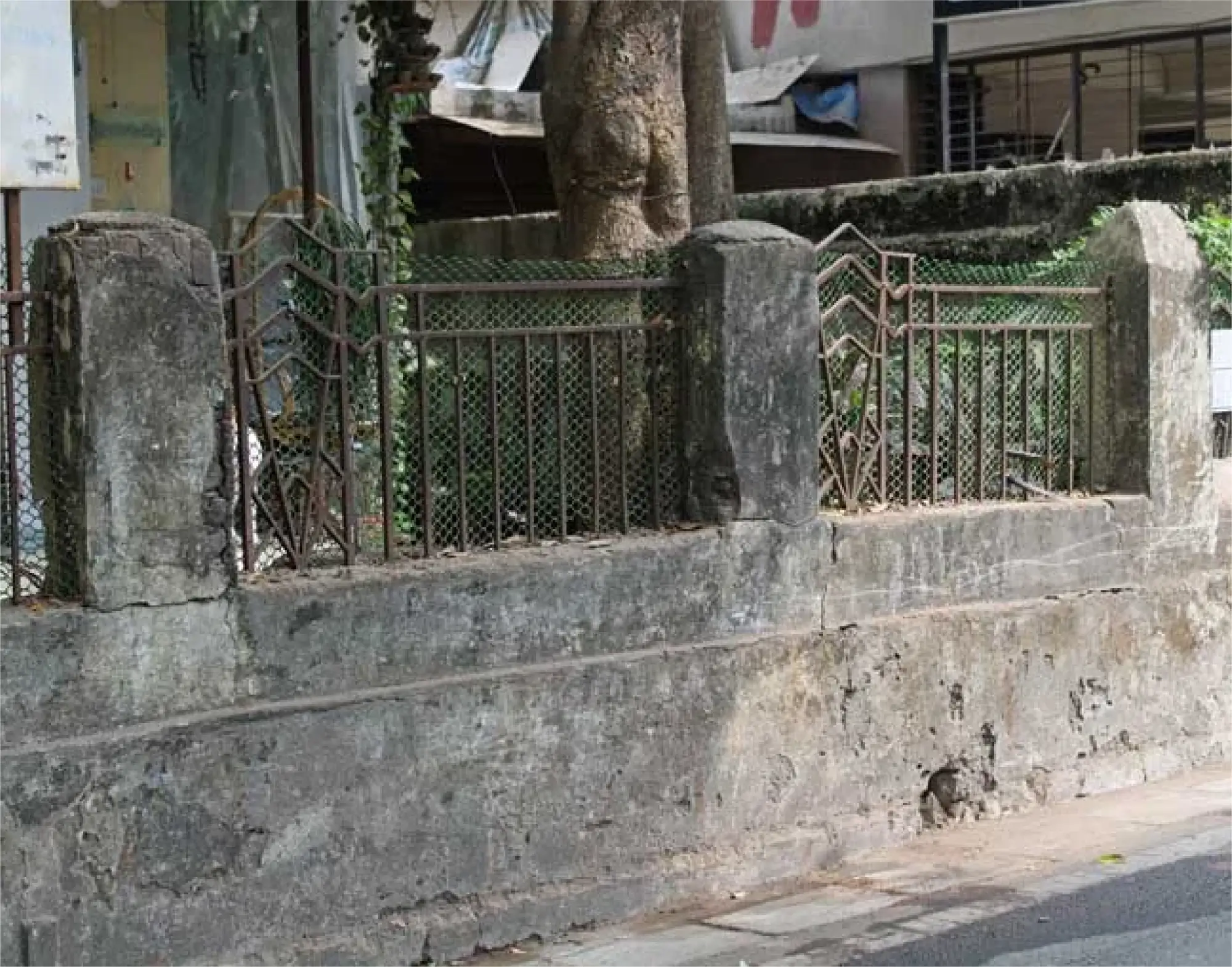
5. LOW COMPOUND WALLS, GRAND ILLUSIONS:
Rather than towering fences, Deco often uses low walls — welcoming and inclusive, making the building appear taller without expanding its footprint. This was often a practical design choice to allow for more light and air to reach the ground-floor residences.
In Matunga’s Hindu Colony, Art Deco residences feature low compound walls, enhancing airflow and light while maintaining a welcoming, open streetscape.
6. MOTIFS THAT TELL STORIES:
Mumbai Deco is known for its cultural mashups, which include lotus blossoms, temple arches, and stylized peacocks meeting zigzags and sunbursts. Meanwhile, Miami takes its cue from the tropics: waves, palms, and pastel sunsets. The façades become storytellers, each motif a whisper from its city.
Find it here: Laxmi Insurance Building, Fort, Mumbai. In Miami, they can be found on buildings in the Miami Beach Architectural Historic District.
The Laxmi Insurance Building in Mumbai’s Fort district showcases Indo-Deco artistry, blending traditional Indian motifs like lotus blossoms and elephants with streamlined Art Deco design.
Architectural detail of a Miami Beach Art Deco building, featuring tropical motifs like palm fronds and stylized sunbursts, characteristic of the district’s design ethos.
